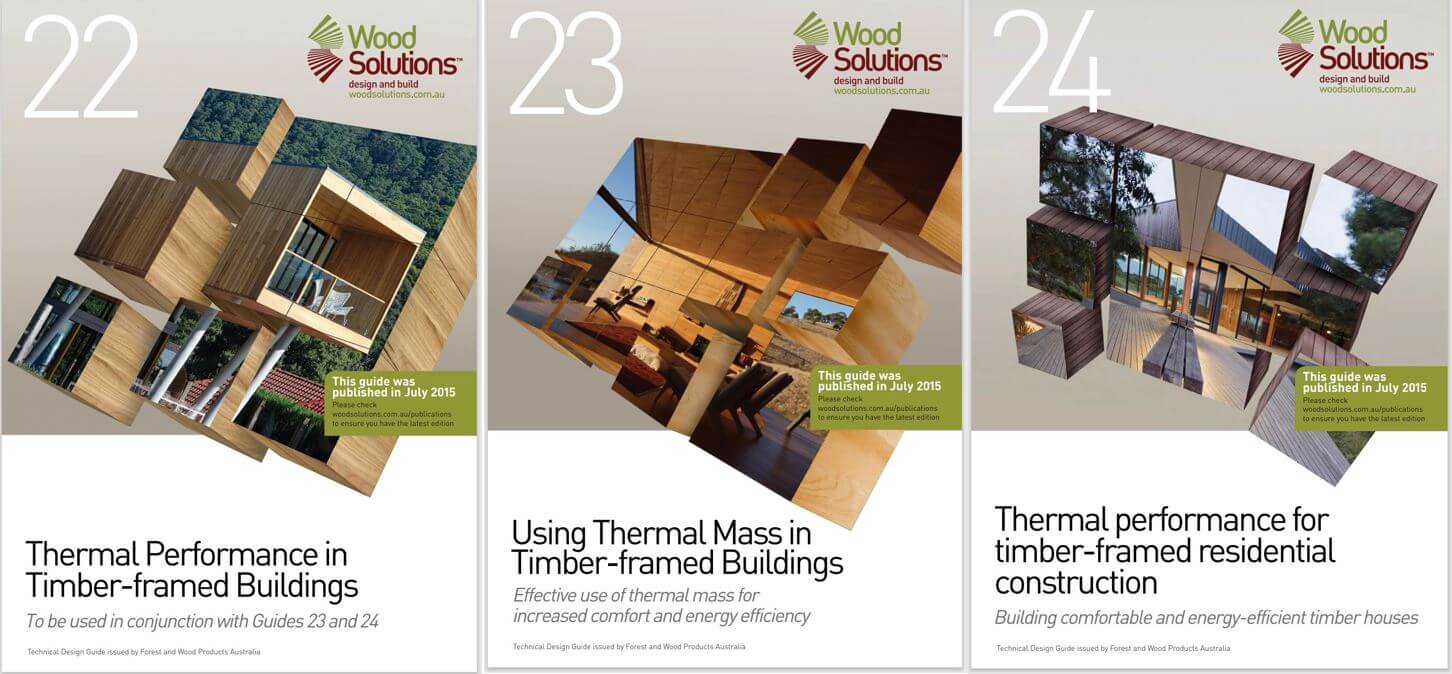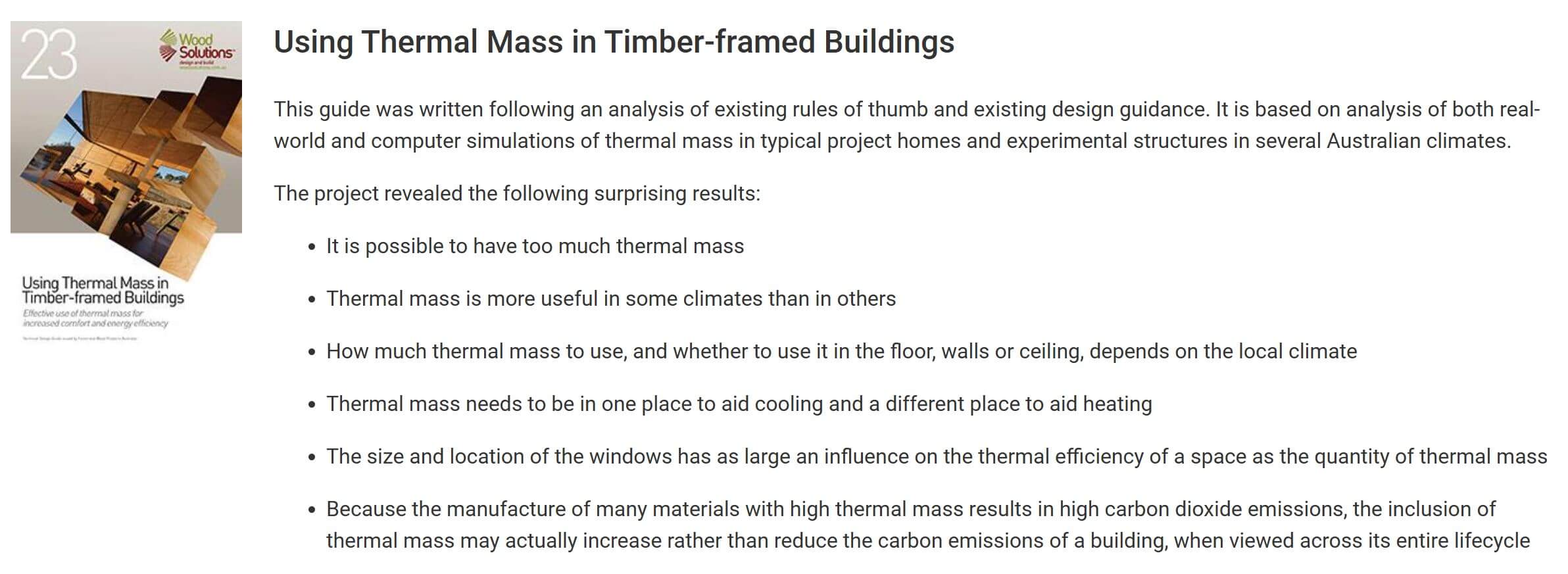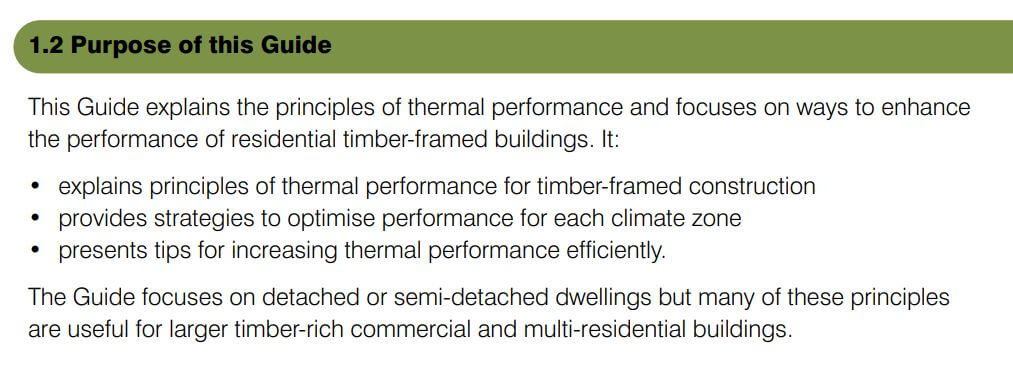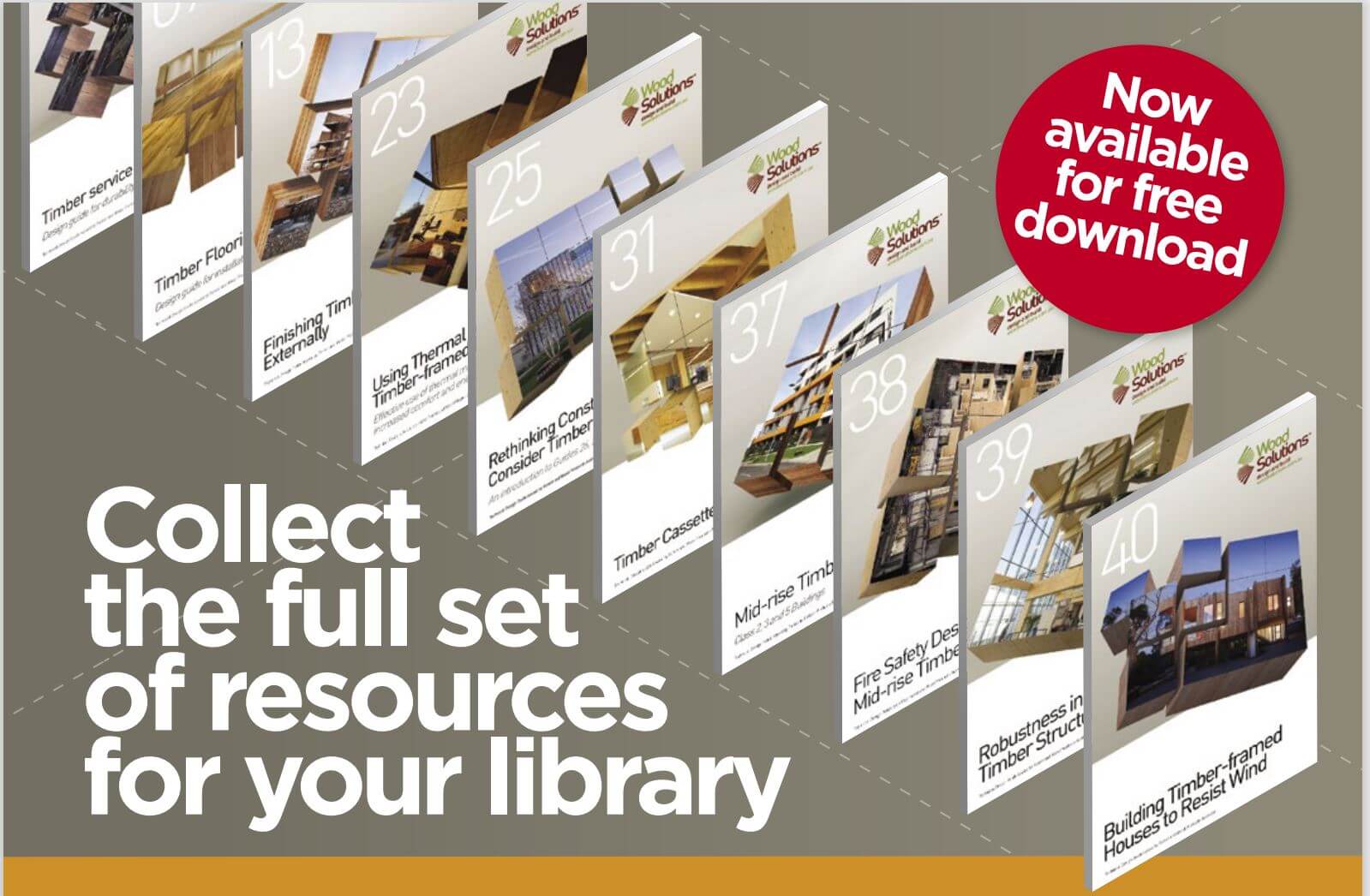This piece was written by FTMA’s Kat Welsh.

What You Need To Know About Thermal Performance for Timber Buildings
Welcome back for the May edition of Design Guides That Matter #5. Where we are showcasing the incredible technical design guides that make up the FREE resources produced by WoodSolutions. For more general information on the design guides, January’s FTMA article has the main insight into what a great resource WoodSolutions has available.
We’re showcasing 3 guides this month, that make up the series for thermal performance in timber-framed buildings:
Thermal Performance in Timber-framed Buildings
(22nd in the series)
Using Thermal Mass in Timber-framed Buildings
(23rd in the series)
Thermal Performance for Timber-framed Residential Construction
(24th in the series)

The first guide, no. 22, gives a comprehensive view of thermal performance and design features as an overall source of information – things to consider as early in the design process as possible. There is plenty to factor in with the over-all build of a home, including orientation for best thermal possibilities, and points to consider. It is a responsibility to get this right, for current and future occupant comfort, and working to lower the carbon footprint of the property. We need to meet certain ratings, when building for thermal performance is about achieving a certain standard – it is also a responsibility to make the design perform as best as possible in line with the climate for the lifespan of the house.

The guides are demonstrating that too much or too little thermal mass is not a good thing. As either of those options can create discomfort for the occupants… but how do you know how to calculate that?

Guides 23 and 24 are more specific in assisting with this question, and providing solutions in determining what the thermal mass ideal should be, along with insulators, ventilation, heat flow, infiltration. These guides have plenty of other resources linking in – for example WoodSolutions have a webinar from 2022, with Dr Philip Christopher, a Research Fellow in Infrastructure Engineering at the University of Melbourne. It ties in with the guides, and looks at the 7 Star NatHERS requirements in Australia.

The union of thermal mass and timber is not just about creating luxurious living spaces; it is about the responsible use of resources and the reduction of carbon footprints. Buildings account for a significant portion of global carbon emissions, and as we aim to build more responsibly, every architectural decision counts. This set of guides acts as an essential authority on navigating the thermal necessities.
It’s free and easy to register an account with WoodSolutions and then the design guides are also free to access after that. The library is constantly being added to, updated, and are often discussed in WoodSolutions’ webinars, blogs and social media posts.
Make the most out of these resources!
Follow WoodSolutions on social media for regular news:
Our Principal Partners




